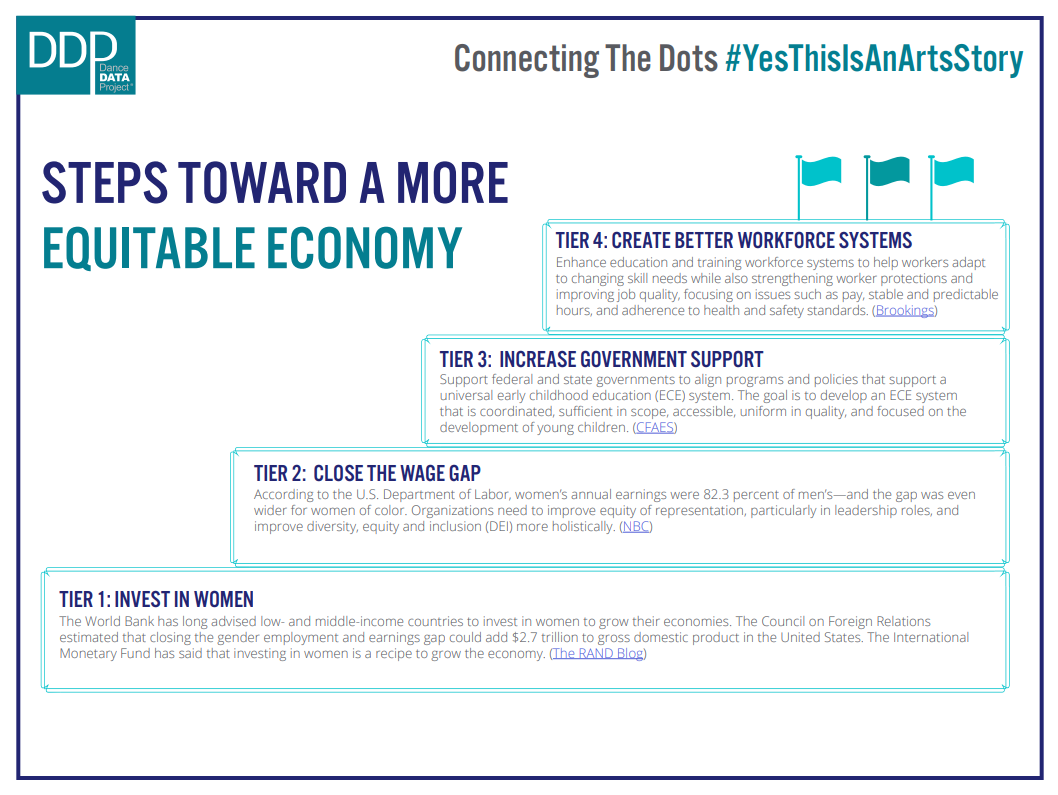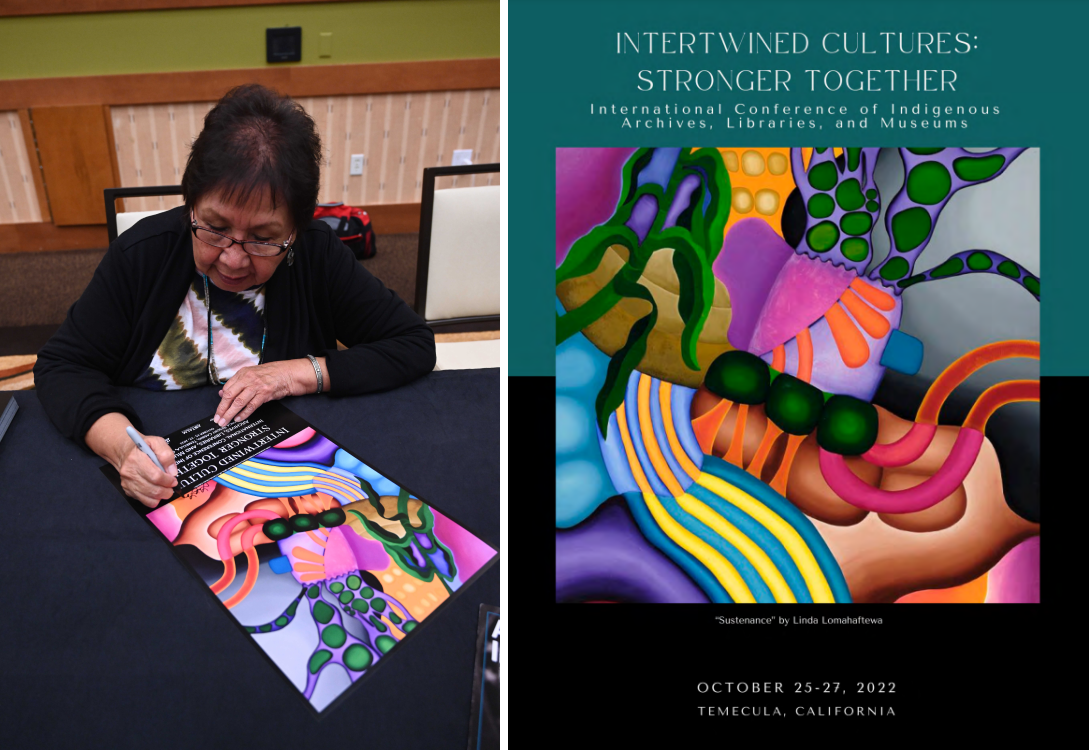New data from the National Endowment for the Arts, summarized in the research brief “Artists in the Workforce: Selected Demographic Characteristics Prior to COVID?19,” paints a fuller picture of why women in the dance industry, particularly women of color,...
New data from the National Endowment for the Arts, summarized in the research brief “Artists in the Workforce: Selected Demographic Characteristics Prior to COVID?19,” paints a fuller picture of why women in the dance industry, particularly women of color, were particularly devastated by the pandemic. When combined with Dance Data Project®’s forthcoming Gender Equity Index—which was born out of a necessity to center policies and initiatives that keep and advance women in the arts—these findings call for more intentional support towards women in the dance industry and the performing arts overall.
National Endowment for the Arts (NEA) research finds that the occupation of dancer/choreographer posed the perfect storm of challenges entering the pandemic: a workforce that is majority female; is young, with less acquired wealth and established careers; comprises a high percentage of non-white workers; and makes the lowest median annual earnings. From 2015-2019, the percentage of dancers and choreographers who identified as female was 77.4%, the highest percentage of female workers of any artist occupation examined. Dancers and choreographers stood at the extremes of other categories as well, including the lowest median age of artist occupations (27 years old), highest percentage of non-white or Hispanic workers (44.1%), and the lowest median annual earnings of any artist occupation studied ($36,365).[1]
Dance Data Project® (DDP) has reported on gender equity in dance leadership since 2018. In April 2021, DDP released its first Connecting the Dots Data Byte, which sourced over 60 articles and studies to reflect the generational suffering of women at the expense of COVID-19’s global impact. In May 2022, DDP released an Updated Connecting the Dots Data Byte, diving deeper into this narrative and highlighting the pandemic’s even stronger hold on women as men have now completely recouped their workforce losses. To make sense of these challenges facing women in the arts, Connecting the Dots brings together data from both the pandemic’s impact on the arts industry and the general status of women in the workforce. (Click the image below to view a larger PDF version of the Updated Connecting the Dots Data Byte.)
While 77.4% of dancers/choreographers are female, women are severely underrepresented in the high-paying role of artistic director: in the 50 largest U.S. ballet companies, DDP found that only 30% of artistic directors are female.[2] Women who did rise to the rank of artistic director in the “Largest 50” made an average of just 63 cents on the dollar compared to their male counterparts in FY 2020. The preponderance of adjunct teachers—whether at universities, in dance schools, or at companies—means that women often are “gig” workers without any safety net, including health benefits. During the COVID-19 pandemic, when many dance companies cancelled performances and furloughed dancers, DDP found that company budgets dropped on average 9%, yet artistic and executive director compensation increased by 3.2% and 1.5% respectively in FY 2020[3]—demonstrating the yawning gap between front line workers and senior, more male-dominated positions.
Overall, the arts and culture sector today employs about 12% fewer people when compared to pre-pandemic levels in March 2020.[4] Unemployment is particularly high for performing artists: 27.4% report being unemployed, roughly twice the number of non-performing artists (14.5%) and higher even than those working in retail (18%).[5] While the arts sector struggles to lower unemployment rates, women in general have had a slower return to the workforce than men as a result of the pandemic. The Bureau of Labor Statistics (BLS) February 2022 job report shows that while men have recouped labor force losses since February 2020, there are one million fewer women in the general labor force as of January 2022. The sharp contrast between the number of men and women in the labor force likely reflects uneven caregiving responsibilities men and women have taken on during the pandemic.[6] Caretaking duties not met with due support from employers or the government have been a longstanding barrier to career advancement and retention for women in the arts.
Recently, DDP launched Moving Forces: Motherhood in Dance, rapid-fire conversations with mothers holding various roles in the dance industry in which women have expressed the following needs:
DDP’s industry-first initiative Raising the Barre: Curriculum for the Next Generation of Dance Leadership features monthly interviews with leaders from all walks of the dance world alongside tangible deliverables, ranging from curated documents necessary for starting your own dance company or touring production to the “Dos and Don’ts” of a search process. Since accessibility is a barrier to success, these resources are available for free on the DDP website. Providing tools for women seeking leadership positions is one step towards narrowing pay and opportunity gaps in dance. It is only through reconfiguring the dance ecosystem—one that did not serve women even before the pandemic—that we can achieve true gender equity post-pandemic.
Another groundbreaking initiative is the forthcoming Gender Equity Index, which uses surveys, research findings, and company participation and transparency—reflecting an organization’s commitment to achieving equity in dance—to rank classically based companies on issues surrounding women in the workplace. DDP’s index rankings will be released in January 2023 and we plan to celebrate those companies and their visionary leaders who are making positive efforts to include women in senior administrative, executive, and creative roles.
In conversation with women and male allies in the dance ecosystem, DDP has recognized several immediate needs:
More data on women and what are their barriers to continuing careers in the arts, including at what point female dancers and dance makers feel they have no choice but to exit the workforce. Adopting national standards for arts institutions—large and small—to implement codes of conduct and procedures around sexual harassment and assault to ensure safe, nontoxic work environments, the ability to report up a clear chain of command, and confidentiality. Recognition of women’s additional obligations as primary childcare and elder care providers, with appropriate support both from employers and state and local governments.To advance equity in the arts, we must acknowledge that the workforce is overwhelmingly female and support policies that recognize women as primary caretakers in order to prevent a further “she-cession” from the arts workforce. As a small organization, DDP is committed to moving the needle on research, policy, and change in the dance industry as a whole. Imagine the shift if larger, well-funded organizations joined this work to advocate for the needs of the majority of the workforce—women.
[1] National Endowment for the Arts, “Artists in the Workforce: Selected Demographic Characteristics Prior to COVID?19”
[2] Dance Data Project, Artistic & Executive Leadership Report 2022
[3] Dance Data Project, Artistic Director/Executive Director Compensation Data Byte
[4] SMU Data Arts, “The Impact of COVID-19 on Employment: Arts & Culture Sector”
[5] The RAND blog, “The Pandemic is a Disaster for Artists”
[6] National Women’s Law Center, “Men Have Now Recouped Their Pandemic Related Labor Force Losses While Women Lag Behind”















